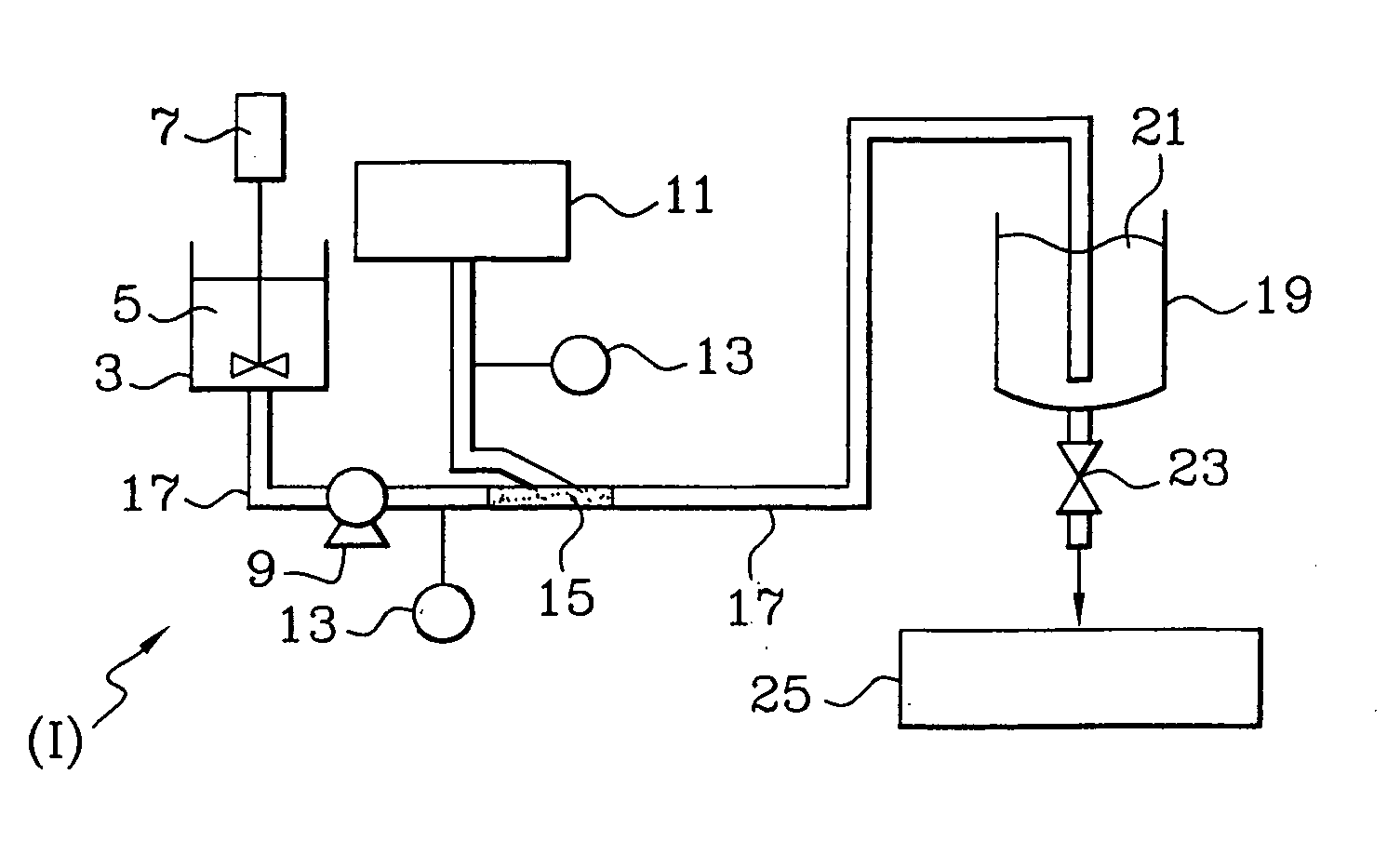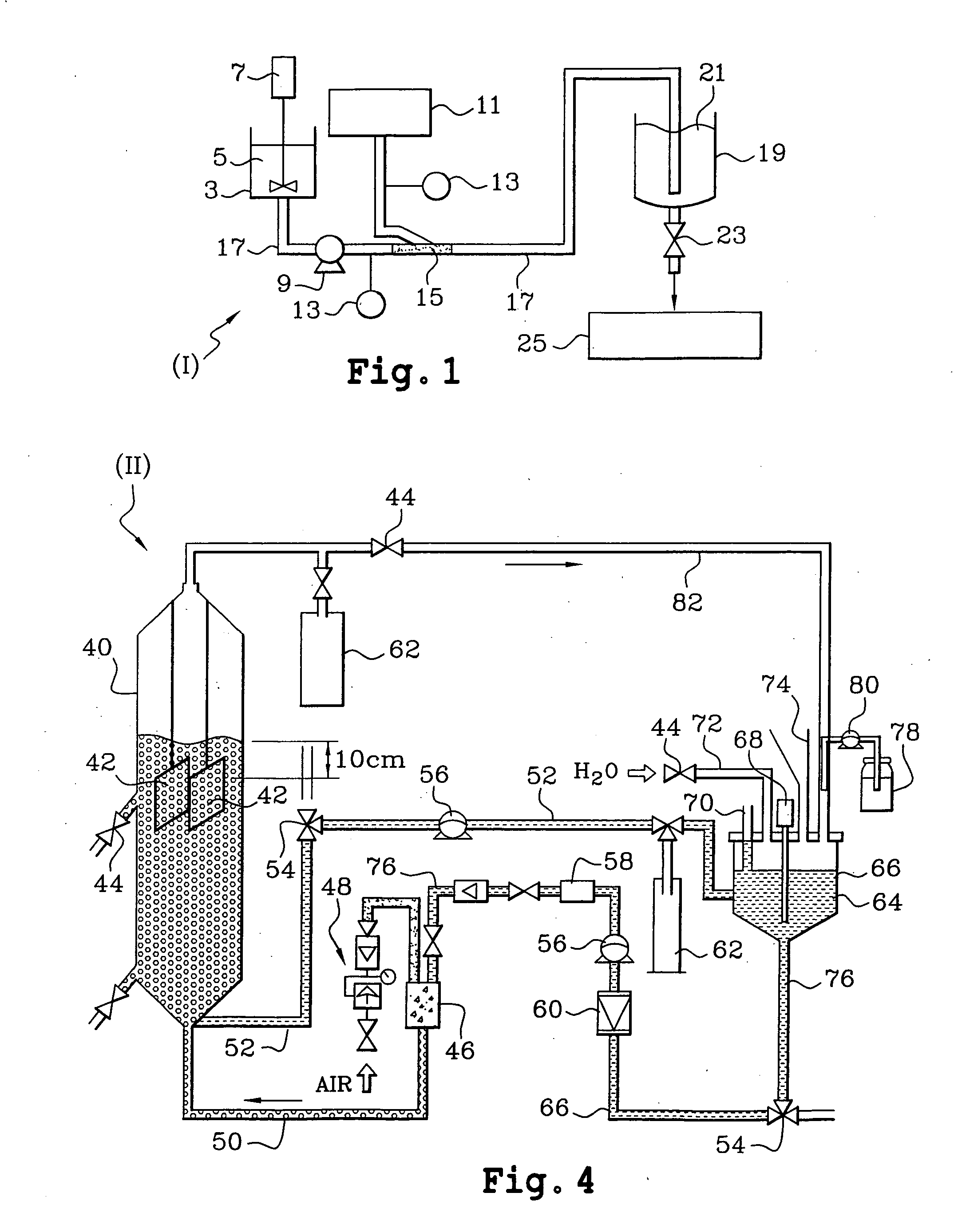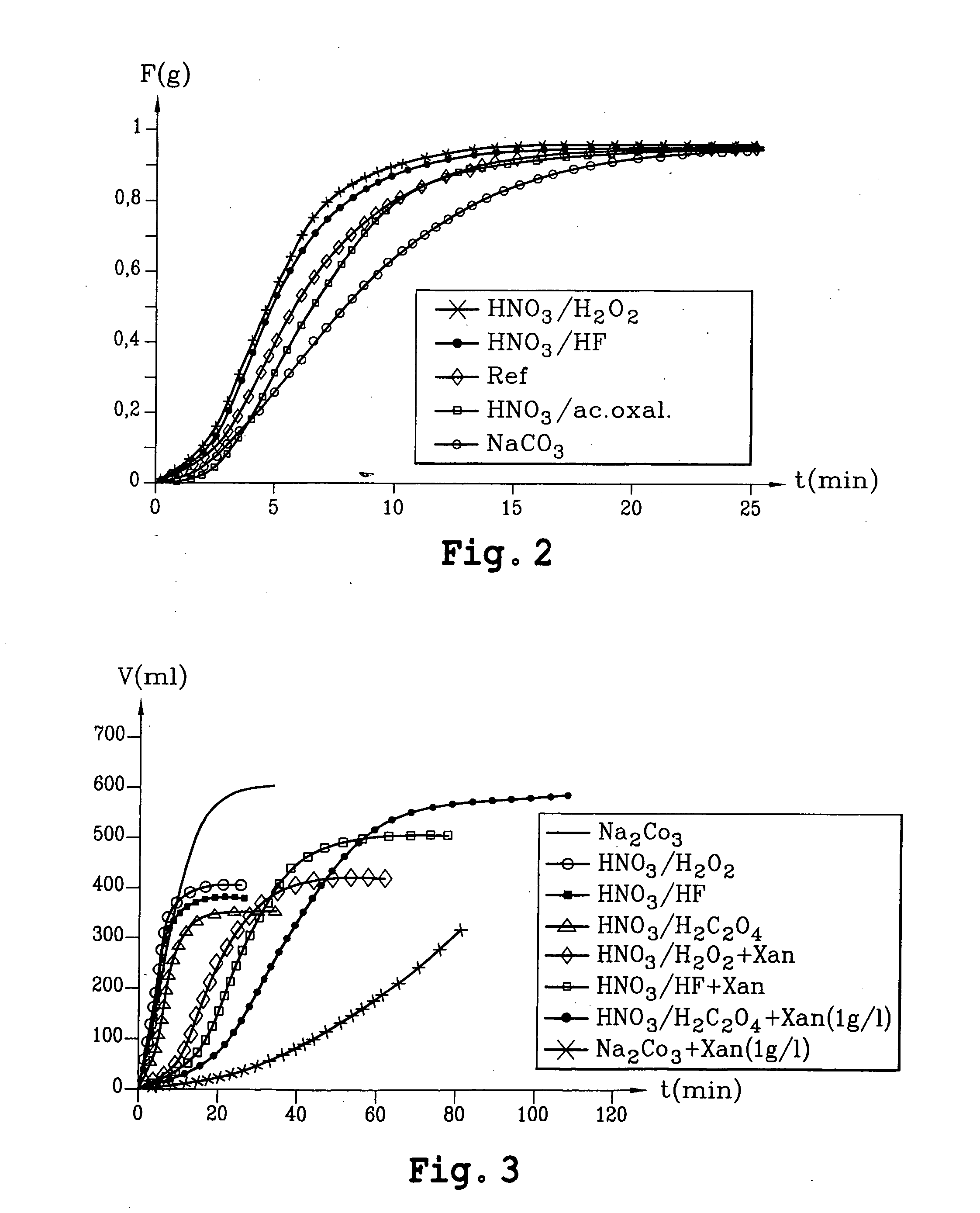Composition, foam and process for the decontamination of surfaces
a technology of surface decontamination and foam, applied in the field of composition, can solve the problems of increased difficulty in rinsing the surface, short life, increased pollution, etc., and achieve the effect of reducing pollution and simplifying the overall procedur
- Summary
- Abstract
- Description
- Claims
- Application Information
AI Technical Summary
Benefits of technology
Problems solved by technology
Method used
Image
Examples
example 1
Foams of the Prior Art
[0057] The draining and effectiveness properties of foams prepared from five foaming solutions each comprising a reference mixture of two surfactants: Oramix (trade mark) at 8 g / l and Amoyl (trade mark) at 3 g / l, were studied.
[0058] One formulation, referred to as reference formulation (allowing the generation of a reference foam), did not comprise decontaminating agent.
[0059] The other four formulations differ in the nature of the decontaminating agent: [0060] 1st formulation: sodium carbonate at a concentration of 1 mol·l−1, [0061] 2nd formulation: a mixture of hydrofluoric acid at a concentration of 0.05 mol·l−1 and of nitric acid at a concentration of 2 mol·l−1, [0062] 3rd formulation: a mixture of oxalic acid at a concentration of 0.6 mol·l−1 and of nitric acid at a concentration of 0.5 mol·l−1, [0063] 4th formulation: a mixture of hydrogen peroxide at a concentration of 1 mol·l−1 and of nitric acid at a concentration of 3 mol·l−1.
[0064] No cloud point...
example 2
Foams of the Present Invention
[0071] The addition of a small amount, that is to say of 0.1% by weight or 1 g / l, of xanthan gum, used as gelling agent within the meaning of the present invention, to the various foaming solution formulations of Example 1 stabilizes all the foams, as is shown in FIG. 3.
[0072] The addition of 1 g / l of xanthan gum has the effect of considerably slowing down the draining of each of the foam formulations and of thus increasing the lifetime of the foam.
[0073] The time t1 / 2 necessary for half the liquid present in the foam to drain and the lifetime t1, time for all the liquid of the foam to drain, are collated in Table 1 below for the various foams studied.
TABLE 1Lifetime t1 and time t1 / 2 for various foam formulations1 g / l ofxanthanWithout xanthan gumgumLifetime t and half life t1 / 2 (in mint1 / 2t1t1 / 2t1and s)Nitric acid + hydrogen peroxide4′30″15′18′50′foamNitric acid + hydrofluoric acid4′30″15′24′60′foamNitric acid + oxalic acid foam6′20′36′80′Alkaline ...
example 3
Treatment of a Surface with Foams of the Present Invention
[0080] The effectiveness of the foams of Example 2 was furthermore tested for the decontamination of surfaces.
[0081] This is because the object is to demonstrate that the foams prepared with the foaming solutions of the present invention can, for example, dissolve a reconstituted deposit of insoluble materials simulating a true irradiating deposit adhering to a wall.
[0082] Stainless steel plates covered with adherent deposits are suspended in a 30 litre column made of plexiglass in the device (II) represented diagrammatically in FIG. 4. In this figure, the following references indicate the following components of the device (II):
[0083] (40): plexiglass column; (42): suspended steel plate; (44): valve; (46) glass bead bed foam generator; (48): system for introducing compressed air; (50): pipe for conveying the foam generated to the column (40); (52): pipe for recovering the draining liquid; (54) valve; (56): pump; (58): pu...
PUM
| Property | Measurement | Unit |
|---|---|---|
| viscosity | aaaaa | aaaaa |
| viscosity | aaaaa | aaaaa |
| temperature | aaaaa | aaaaa |
Abstract
Description
Claims
Application Information
 Login to View More
Login to View More - R&D
- Intellectual Property
- Life Sciences
- Materials
- Tech Scout
- Unparalleled Data Quality
- Higher Quality Content
- 60% Fewer Hallucinations
Browse by: Latest US Patents, China's latest patents, Technical Efficacy Thesaurus, Application Domain, Technology Topic, Popular Technical Reports.
© 2025 PatSnap. All rights reserved.Legal|Privacy policy|Modern Slavery Act Transparency Statement|Sitemap|About US| Contact US: help@patsnap.com



